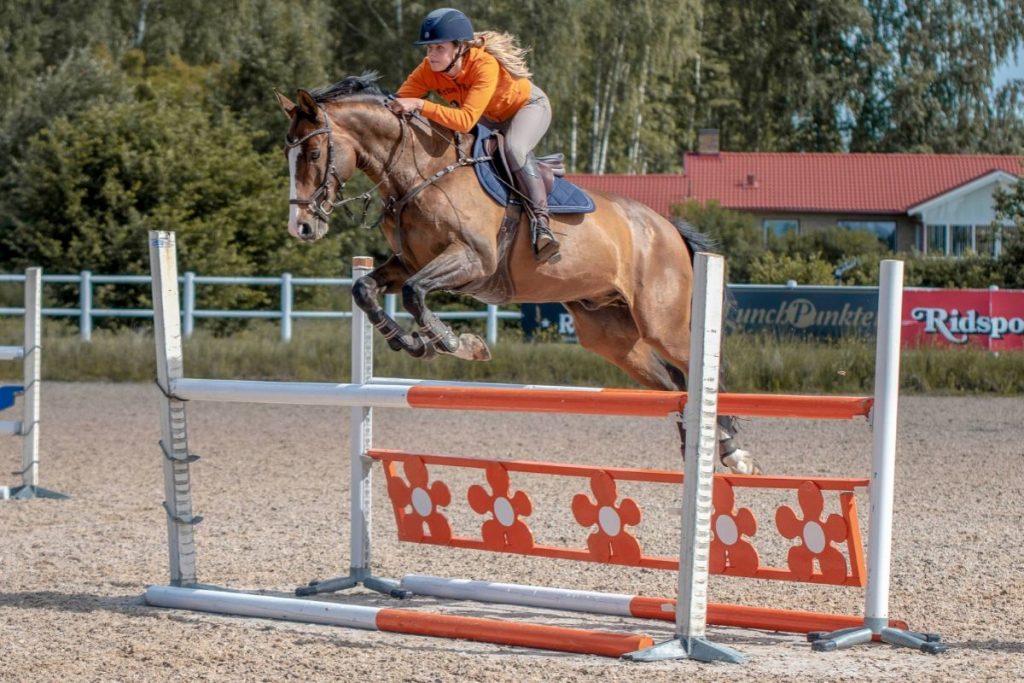When it comes to our horses, we want them to be healthy, happy, and well-exercised. We also want to spend as much time with them as possible, get in our training, and still have some time left over for riding. Naturally, we are faced with how much exercise is possible, how much work or training should they have, and how often should they be ridden in any given week.
Regardless of your skill level as a rider, it is the horse’s fitness, conformation, and temperament that should be highly regarded for figuring out the answer to the question;
How many times a week should I ride my horse?
In general, if you want to just maintain an average level of fitness, then you are looking at riding them at least three times a week doing a combination of walking, trotting, and cantering. This should be done for a minimum of 30-minutes. You absolutely want to do trotting as this builds muscle and cantering is amazing for their cardiovascular health. If you want to maintain performance levels of fitness, you are going to want to exercise them 4-6 days a week with 1 light day and 1 day off for recovery after shows and hard weeks.
While it can be very easy to say a minimum of this many days and a maximum of that many days, there isn’t actually a cut and dry answer to this question.
So many factors play a role in the answer, and so we are going to give you a few guideline questions to answer and walk you through some related questions that can pop up.
Determining How Often You Can Ride in a Week
While there are very few rules set for determining the answer to this question, you can look towards your horse for the answer.
How old is your horse?
Their age is going to play a factor in how easily they get tired and if they are more prone to injury or have mobility issues that would impact how often you can ride them for.
A young horse that is around 2-3 year of age can be worked hard 3 times a week, whereas, senior or retired horses may only be worked 3 days a week with light work.
What is their training regimen and what level are they at?
If your horse is training extremely hard during the week and is tired after the fact, they will need to rest. However, if your horse is working extremely hard but is getting stronger, faster, and isn’t breaking as much of a sweat or showing signs of fatigue, you can safely ride them.
If they are new to training or are on a lower training level, riding them is good, but you will need to pace it and work them up towards more activity.
What is the temperament of your horse?
If they are excitable or love being a “racehorse”, then the more exercise the better for them.
Where is your / are your horses housed?
If they live in a box stall and are cramped in when they are not in training or being ridden by you, then you will need to ride them more often for the sake of their health.
If they live in a large paddock or get to stretch their legs often, you can get away with a little less.
How fit are you?
You don’t want to have improper form while trying to ride your horse. Keep this in mind as you want to make sure that your horse is getting healthy exercise.
How Long Should You Ride a Horse For?

There are a few ways that this question can be interpreted, and the answer solely depends on both the horse and the rider.
If you are looking at this from how long you can ride the horse for in terms of miles, this is dependent on the weather conditions, the horse’s physical prowess/limitations, and the rider’s physical fitness.
Typically, an average horse is more than comfortable walking for eight hours at 4 mph, or 32 miles in a day. Generally, the rider cannot last that long.
Factors that impact this include how hot it is outside, if the horse is sweating a lot and what the terrain is like.
The other angle we can take is, how long should you be riding your horse for throughout various training exercises?
⦁ Schooling/flatwork is anywhere between 45-minutes and 60-minutes.
⦁ Hacking is anywhere between 45-minutes and 120-minutes.
⦁ Jumping/pole work is anywhere between 20-minutes and 45-minutes.
⦁ Lunging is anywhere between 20-minutes and 30-minutes.
For an older horse that is retired. Light schooling would be appropriate in a walk/trot at 30-40-minutes 1-3 times a week and hacking for 20-120-minutes up to 2 times a week. Please keep in mind these times are not set in stone and are highly dependent on your horse’s fitness levels.
How Often Should You Jump Your Horse?
This is completely dependent on the horse. Some will need to get jumped on a regular basis over a few jumps while others will rarely need to get jumped but when they are jumped, they will be large jumps.
You have to take a look at your horse’s conformation and how easily they become “out of condition” and whether jumping will put a lot of stress on the horse.
Your horse’s fitness level needs to be able to handle the stress that jumping puts on the joints and muscles.
⦁ If you are jumping 2’6” or smaller, doing this 3 times a week should be okay if your horse’s fitness levels support it. Make sure that if your horse appears lazy, bored, worn out or stiff during jumping, taper the jumping off for a while.
⦁ Most people recommend that you jump your horse 1-2 a week or once a week during show season as 3-10 jumps per day.
⦁ For very young horses, having them jump over a lot of smaller fences on a regular basis is good to help show them that there is no need to fear jumping.
Can You Ride a Horse Twice a Day?
Absolutely! There is nothing wrong with working your horse twice a day, as long as the intensity of the day suits it. You wouldn’t want to be jumping your horse twice a day but going out for a ride twice in one day is completely fine.
There are some noted benefits of riding your horse twice a day to build up their strength and understanding. This is why a lot of training lessons are done in 45-60-minute block increments.
⦁ The first riding session can be used to work on the basics such as building confidence in movements, while the second sessions can be used for newer movements or challenging movements.
⦁ If you work your horse twice a day at home and work it into their regular routine, this makes it a lot easier if you are planning on competing with your horse, as completing two tests in one day is quite a common occurrence.
⦁ Another benefit of riding your horse in schooling twice a day is ending your horse on a positive note. If you complete a complicated movement, you can end by giving them a pat on the neck or a slice of carrot and stabling them for the night. This leaves your horse in a good mood and more willing to get back at work the following day.
Just make sure that you are paying attention to your horse’s behavior and fitness. You don’t want to push them really hard twice in one day as this can cause lameness, health problems, or behavioral issues.
Does Your Horse Need Rest?
Yes, your horse needs rest. Just like you and me, a horse needs to rest in order to respond to the stress of the workouts that you are putting them through. Your horse becomes stronger during rest, as muscles and tissues need to recover after being worked.
How much rest is dependent on the horse and how much work you are putting them through, what their fitness level is, and how old they are. A typical conditioning week would have 2-3 days of rest with 4 days of schooling, long slow distance training, light riding, and an intense day of interval training/hills.
Keep in mind though, the conditioning schedule will vary from horse to horse. Some individuals will have their horses rest once a week while others will do two or more depending on whether it is show season or not.
